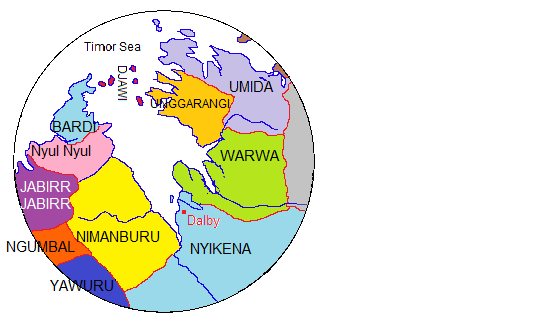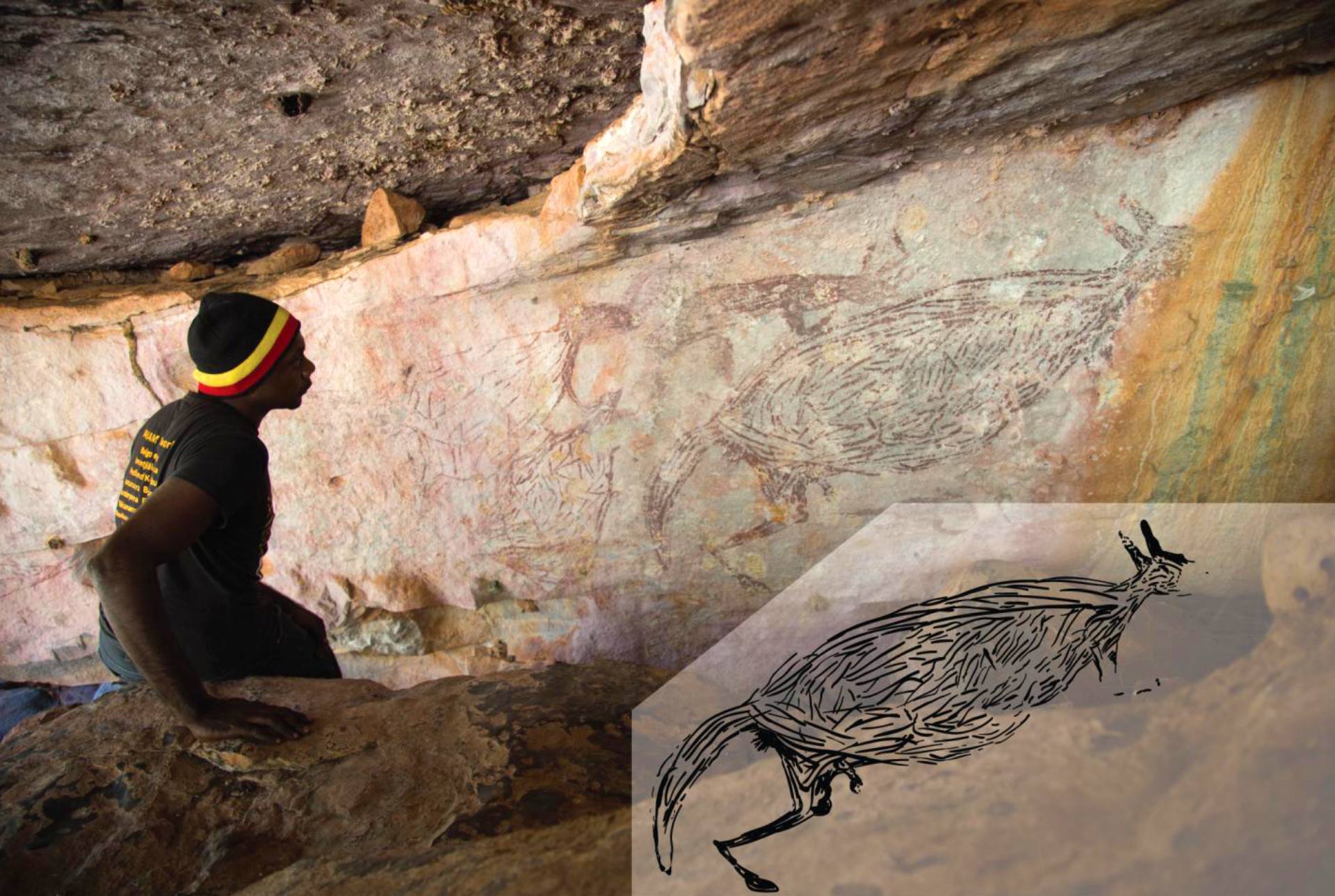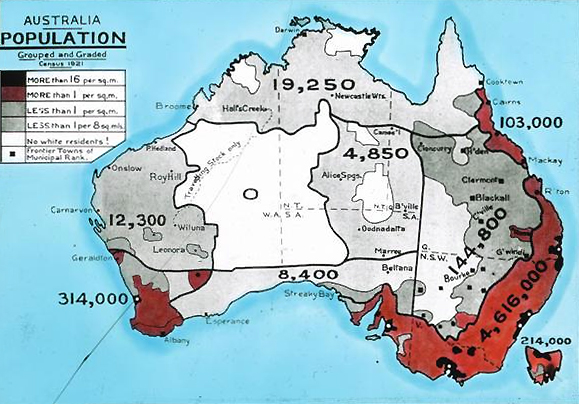|
Djarindjin
Djarindjin is a medium-sized Aboriginal community located north of Broome in the Kimberley region of Western Australia, within the Shire of Broome. It is within the traditional lands of the Bardi and Jawi peoples. Location Djarindjin is located on the west coast of the northern Dampier Peninsula sub-region, north of Broome. Djarindjin is part of a single urban area that incorporates the Lombadina Aboriginal community and the Lombadina Mission. At the 2016 Census, this single urban area had a total population of 397, including 312 Aboriginal and Torres Strait Islander people. The township is approximately due west of Cape Leveque Road. Djarindjin Aboriginal Corporation maintains a very large land holding surrounding the town. This land includes existing and proposed development that services the northern Dampier Peninsula sub-region, including an airstrip, multi-function police station, and drinking water protection area, all of which are located at the Cape Leveque Road ... [...More Info...] [...Related Items...] OR: [Wikipedia] [Google] [Baidu] |
Lombadina, Western Australia
Lombadina is a medium-sized Aboriginal community on the north-western coast of Western Australia on Cape Leveque, north of Broome in the Kimberley region. The name is derived from the Aboriginal word, . The community is inhabited by the Bardi people. Lombadina is part of a single urban area that incorporates Djarindjin and Lombadina. At the 2016 Census, this single urban area had a total population of 397, including 312 Aboriginal and Torres Strait Islander people. The Catholic mission was established with the help of Thomas Puertollano, a Filipino from Manila, in 191011. In 1916, to avoid it being taken over by the government of Western Australia, the land was bought by an Irishman, the brother of the controversial Redemptorist priest, John Creagh. Native title The community is located within the determined Bardi Jawi (WAD49/1998) native title claim area. Education Children of school age at Lombadina attend the Lombadina-Djarindjin Catholic Primary School. The scho ... [...More Info...] [...Related Items...] OR: [Wikipedia] [Google] [Baidu] |
Bardi People
The Bardi people, also spelt Baada or Baardi and other variations, are an Aboriginal Australian people, living north of Broome, Western Australia, Broome and inhabiting parts of the Dampier Peninsula in the Kimberley (Western Australia), Kimberley region of Western Australia. They are ethnically close to the Jawi people, and several organisations refer to the Bardi Jawi grouping, such as the Bardi Jawi Niimidiman Aboriginal Corporation Registered Native Title Body Corporate, Registered Native Title Body and the Bardi Jawi Rangers. Language The Bardi language is a non-Pama-Nyungan languages, Pama-Nyungan tongue, the most northerly variety of the Nyulnyulan language family. It is mutually intelligible with Jawi language, Jawi. It is the best known Nyulnyulan language, and a detailed grammar of the language exists, written by Claire Bowern. The Pallottines, Pallotine priest and linguist, Hermann Nekes, who worked with Ernst Alfred Worms in compiling dictionaries of Baardi and rela ... [...More Info...] [...Related Items...] OR: [Wikipedia] [Google] [Baidu] |
Shire Of Broome
The Shire of Broome is one of the four Local government areas of Western Australia, local government areas in the Kimberley region of Western Australia, Kimberley region of northern Western Australia, covering an area of , most of which is sparsely populated. The Shire's estimated population as at the was 16,222 most of whom reside in the town of Broome, Western Australia, Broome. Many Aboriginal Australians, Aboriginal communities are within the Shire, notably Beagle Bay Community, Beagle Bay and Bardi, Western Australia, Bardi (One Arm Point). The Shire of Broome includes the Rowley Shoals to the west. History The Shire of Broome was first established as the second Broome Road District on 20 December 1918, when it was separated from the Shire of Derby-West Kimberley, West Kimberley Road District. The area had been previously represented by an earlier Broome Road District (1901-1908) and the Municipality of Broome (1904-1918) but both had merged back into the West Kimberley d ... [...More Info...] [...Related Items...] OR: [Wikipedia] [Google] [Baidu] |
Kimberley (Western Australia)
The Kimberley is the northernmost of the nine regions of Western Australia. It is bordered on the west by the Indian Ocean, on the north by the Timor Sea, on the south by the Great Sandy Desert, Great Sandy and Tanami Desert, Tanami deserts in the region of the Pilbara, and on the east by the Northern Territory. The region was named in 1879 by government surveyor Alexander Forrest after Secretary of State for the Colonies John Wodehouse, 1st Earl of Kimberley. History The Kimberley was one of the earliest settled parts of Australia, with the first humans landing about 65,000 years ago. They created a complex culture that developed over thousands of years. Yam (vegetable), Yam (''Dioscorea hastifolia'') agriculture was developed, and rock art suggests that this was where some of the earliest boomerangs were invented. The worship of Wandjina deities was most common in this region, and a complex theology dealing with the transmigration of souls was part of the local people's religi ... [...More Info...] [...Related Items...] OR: [Wikipedia] [Google] [Baidu] |
Australian Western Standard Time
Australia uses three main time zones: Australian Eastern Standard Time (AEST; UTC+10:00), Australian Central Standard Time (ACST; UTC+09:30) and Australian Western Standard Time (AWST; UTC+08:00). Time is regulated by the individual state governments, some of which observe daylight saving time (DST). Daylight saving time (+1 hour) is used between the first Sunday in October and the first Sunday in April in jurisdictions in the south and south-east: * New South Wales, Victoria, Tasmania, Jervis Bay Territory and the Australian Capital Territory switches to the Australian Eastern Daylight Saving Time (AEDT; UTC+11:00), and * South Australia switches to the Australian Central Daylight Saving Time (ACDT; UTC+10:30). Standard time was introduced in the 1890s when all of the Australian colonies adopted it. Before the switch to standard time zones, each local city or town was free to determine its local time, called local mean time. Western Australia uses Western Standard Time ... [...More Info...] [...Related Items...] OR: [Wikipedia] [Google] [Baidu] |
Pallottines
The Pallottines, officially named the Society of the Catholic Apostolate (), abbreviated SAC, is a Society of Apostolic Life of Pontifical Right for men in the Roman Catholic Church, founded in 1835 by the Roman Catholic priest Saint Vincent Pallotti. Pallottines are part of the Union of Catholic Apostolate and are present in 45 countries on six continents. The Pallottines administer one of the largest churches in the world, the Basilica of Our Lady of Peace of Yamoussoukro in Côte d'Ivoire. History Vincent Pallotti was born in Rome in 1795. Together with a group of associates and collaborators, he developed in the city of Rome a large structure of apostolic activity, which included assisting the poor, the sick, and the marginalized; founding orphanages, institutions of charity, and shelters; and ministering to soldiers, workers, students, and prisoners. The Society, as a community of priests and brothers, was founded in Rome by Pallotti in 1835. Vincent Pallotti died on 22 ... [...More Info...] [...Related Items...] OR: [Wikipedia] [Google] [Baidu] |
Australian Government
The Australian Government, also known as the Commonwealth Government or simply as the federal government, is the national executive government of Australia, a federal parliamentary constitutional monarchy. The executive consists of the prime minister, cabinet ministers and other ministers that currently have the support of a majority of the members of the House of Representatives (the lower house) and also includes the departments and other executive bodies that ministers oversee. The current executive government consists of Anthony Albanese and other ministers of the Australian Labor Party (ALP), in office since the 2022 federal election. The prime minister is the head of the federal government and is a role which exists by constitutional convention, rather than by law. They are appointed to the role by the governor-general (the federal representative of the monarch of Australia). The governor-general normally appoints the parliamentary leader who commands the ... [...More Info...] [...Related Items...] OR: [Wikipedia] [Google] [Baidu] |
Western Australian Planning Commission
The Western Australian Planning Commission (WAPC) is an independent statutory authority of the Government of Western Australia that exists to coordinate strategic and statutory planning for future urban, rural, and regional land use. The WAPC fulfils various statutory responsibilities first established in 1955. The authority is responsible for expenditure arising from the Metropolitan Region Improvement Tax. The role of the commission is to advise the Minister for Planning, make statutory decisions on a range of planning application types, approve subdivision applications, implement the state planning framework, and prepare and review region schemes to cater for anticipated growth. All staffing is provided by the Department of Planning, Lands and Heritage to which it also delegates many statutory powers. History The Planning and Development Act of 1928 established a Town Planning Board as the central authority responsible for approving subdivision and town planning schemes pr ... [...More Info...] [...Related Items...] OR: [Wikipedia] [Google] [Baidu] |
Native Title Act 1993
The ''Native Title Act 1993'' (Cth) is an act of the Australian Parliament, the purpose of which is "to provide a national system for the recognition and protection of native title and for its co-existence with the national land management system". The Act was passed by the Keating government following the High Court of Australia, High Court's decision in Mabo v Queensland (No 2) (1992).. The Act commenced operation on 1 January 1994. Act This legislation aimed to codify the Mabo decision and implemented strategies to facilitate the process of recognising native title in Australia. The Act also established the National Native Title Tribunal, to register, hear and determine native title claims. According to the Australian Government: ''The Native Title Act'' 1993 establishes a framework for the protection and recognition of native title. The Australian legal system recognises native title where: *the rights and interests are possessed under traditional laws and customs that c ... [...More Info...] [...Related Items...] OR: [Wikipedia] [Google] [Baidu] |
Roman Catholic Diocese Of Broome
The Diocese of Broome is a Latin Church ecclesiastical jurisdiction or diocese of the Catholic Church in Australia. The diocese covers the Kimberley and Pilbara regions of Western Australia. It is a suffragan in the ecclesiastical province of the metropolitan Archdiocese of Perth. Its cathedral episcopal see is Our Lady Queen of Peace Cathedral, in Broome, Western Australia. History On 10 May 1887, it was established initially as an Apostolic Vicariate of Kimberley in Western Australia, on territory split off from the then Diocese of Perth. On 4 May 1910, it lost territory to establish the Mission sui juris of Drysdale River, which was later renamed Kalumburu. On 13 November 1959, it was renamed as Apostolic Vicariate of Kimberleys. It was elevated as a diocese on 7 June 1966. In 1980, it regained the territory of the suppressed Mission sui juris of Kalumburu. Episcopal ordinaries The following individuals were ordinaries of Broome. Vicars Apostolic of Kimberley in We ... [...More Info...] [...Related Items...] OR: [Wikipedia] [Google] [Baidu] |
St John Of God Health Care
St John of God Health Care is a Catholic provider of health care services in Australia, with 24 hospitals and facilities comprising more than 3,400 beds. The group operates in Western Australia, New South Wales, Victoria (Australia), Victoria, and New Zealand. The group has evolved out of the Brothers Hospitallers of Saint John of God, a Catholic order. History The congregation of the Sisters of St John of God was founded in 1871 in Wexford, Ireland. In 1895, Perth's Bishop Matthew Gibney sent a request to the Sisters for help to care for people suffering from typhoid fever during the Western Australian gold rushes, 1890s gold rush. The first hospital established under this arrangement was at Kalgoorlie in the late 1890s followed shortly by St John of God Subiaco Hospital, another in the Perth suburb of Subiaco, Western Australia, Subiaco. The Sisters often cared for patients with infectious diseases including typhoid and Hansen's disease (leprosy), which spread quickly in c ... [...More Info...] [...Related Items...] OR: [Wikipedia] [Google] [Baidu] |
Census In Australia
The Census in Australia, officially the Census of Population and Housing, is the national census in Australia that occurs every five years. The census collects key demographic, social and economic data from all people in Australia on census night, including overseas visitors and residents of States and territories of Australia#External territories, Australian external territories, only excluding foreign diplomats. The census is the largest and most significant statistical event in Australia and is run by the Australian Bureau of Statistics (ABS). Every person must complete the census, although some personal questions are not compulsory. The penalty for failing to complete the census after being directed to by the Australian Statistician is one federal penalty unit, or . The ''Australian Bureau of Statistics Act 1975'' and ''Census and Statistics Act 1905'' authorise the ABS to collect, store, and share anonymised data. The 1911 Australian census, first Australian census was held ... [...More Info...] [...Related Items...] OR: [Wikipedia] [Google] [Baidu] |


